The front of the shoulders and across the top of the chest and rib cage can get quite happily tight with modern life, where we are sitting hunched over a computer.
I frequently find that many upper back issues seem to come from a quietly comfortable, tight pectoral area pull the shoulders and head forwards, and the muscles on the back having to pull backwards.
There are three positions for this to get to the different angles of the fibres. These extend to the ribs from the little boney point (called the coracoid process) that sits between the top of the arm and the collar bone. The coracoid process is actually the front of your shoulder blade.
Equipment
A wall, or a door, or a door frame.
Steps
- Start off standing upright.
- Position your self so your feet are close enough that you’re not leaning sideways onto the wall when your arm rests against the wall
- Place the forearm against the wall with the hand vertically above the elbow.
- Position 1 is to have your hand at ear height.
- Using small steps, turn the feet away from the wall, moving the pelvis and ribcage.
- Wait at the point of stretch for about 30 seconds.
- Move your feet back to turn your body back to the front.
- Position 2 is to have your elbow at shoulder height
- Using the feet turn the body away from the wall.
- Wait at the point of stretch for about 30 seconds.
- Move your feet back to turn your body back to the front.
- Position 3 is to have your elbow at ear height
- Using the feet turn the body away from the wall.
- Wait at the point of stretch for about 30 seconds.
- Move your feet back to turn your body back to the front.
- Repeat on the other side
NB. If this stretch creates pain, or makes pain worse, please stop the stretch and come out of it. Please seek advice on what is happening.
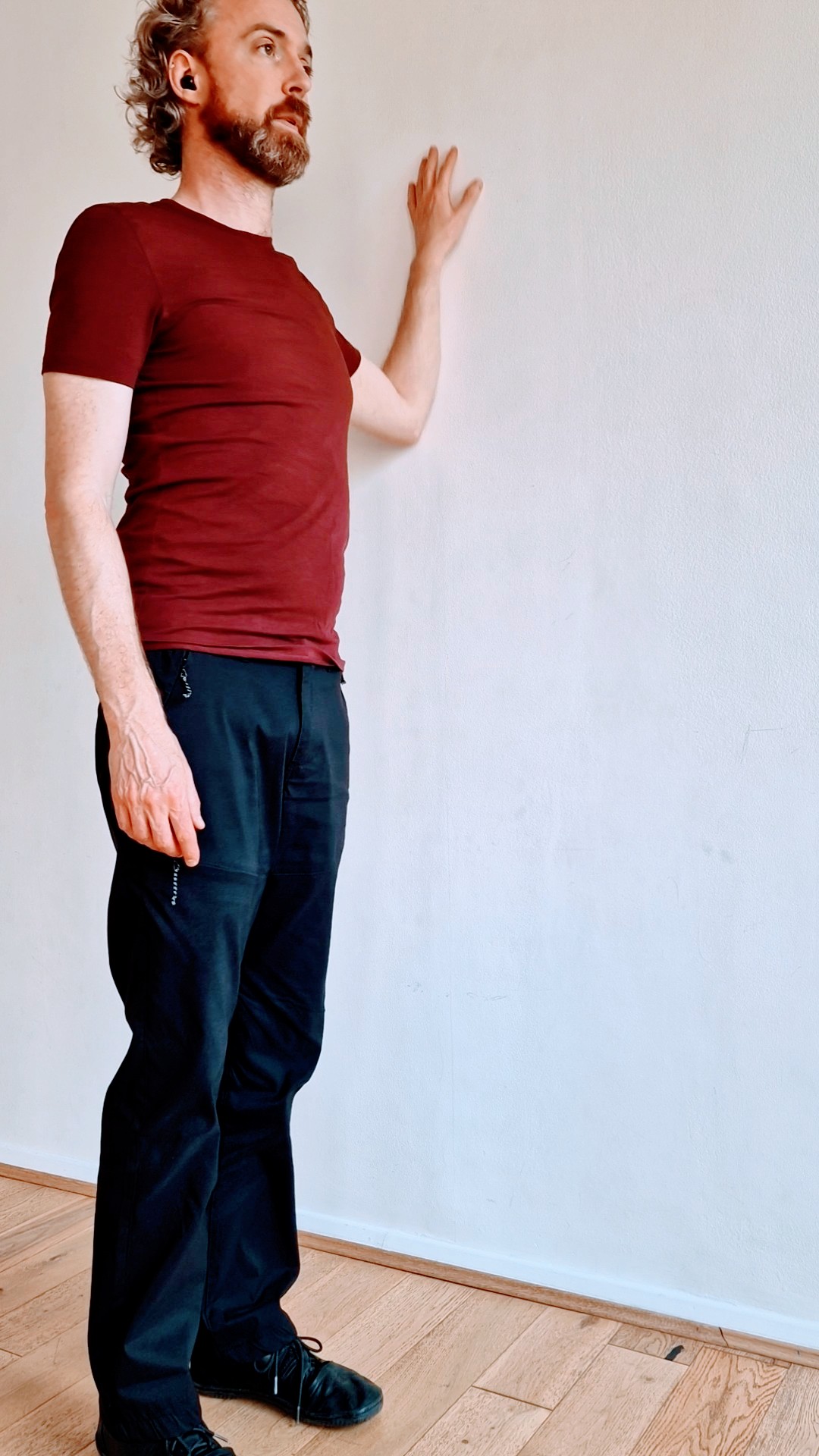
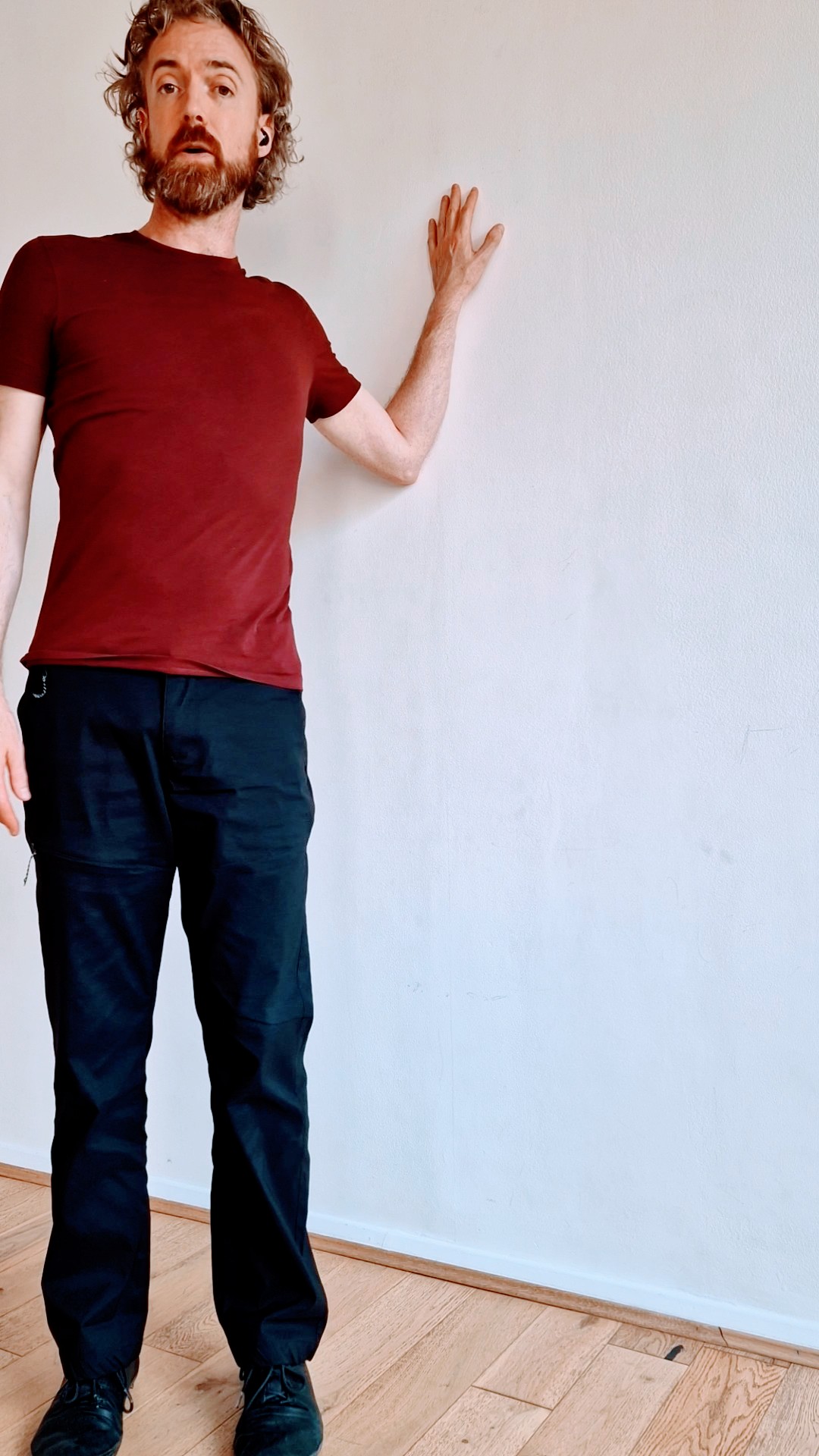
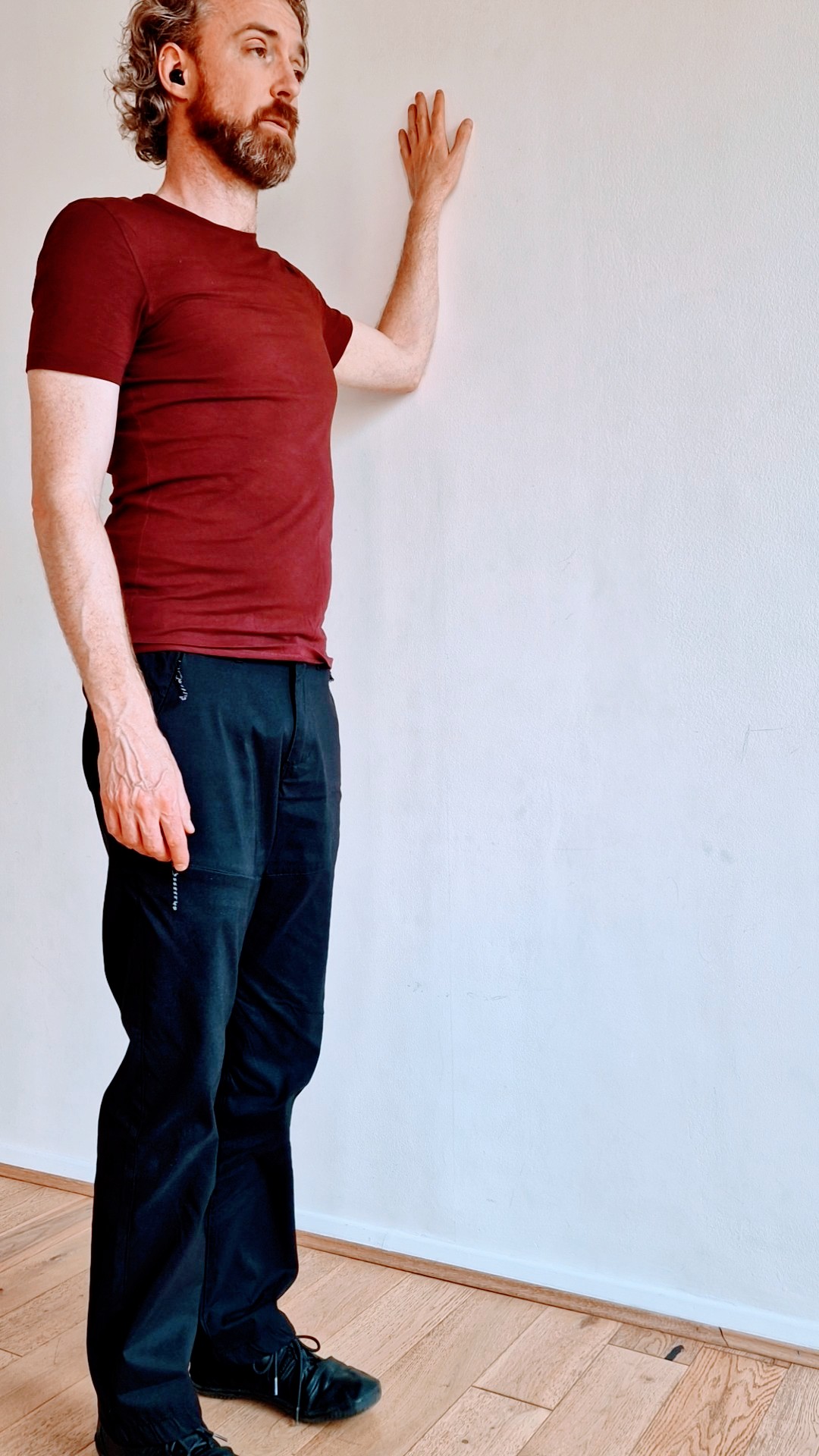
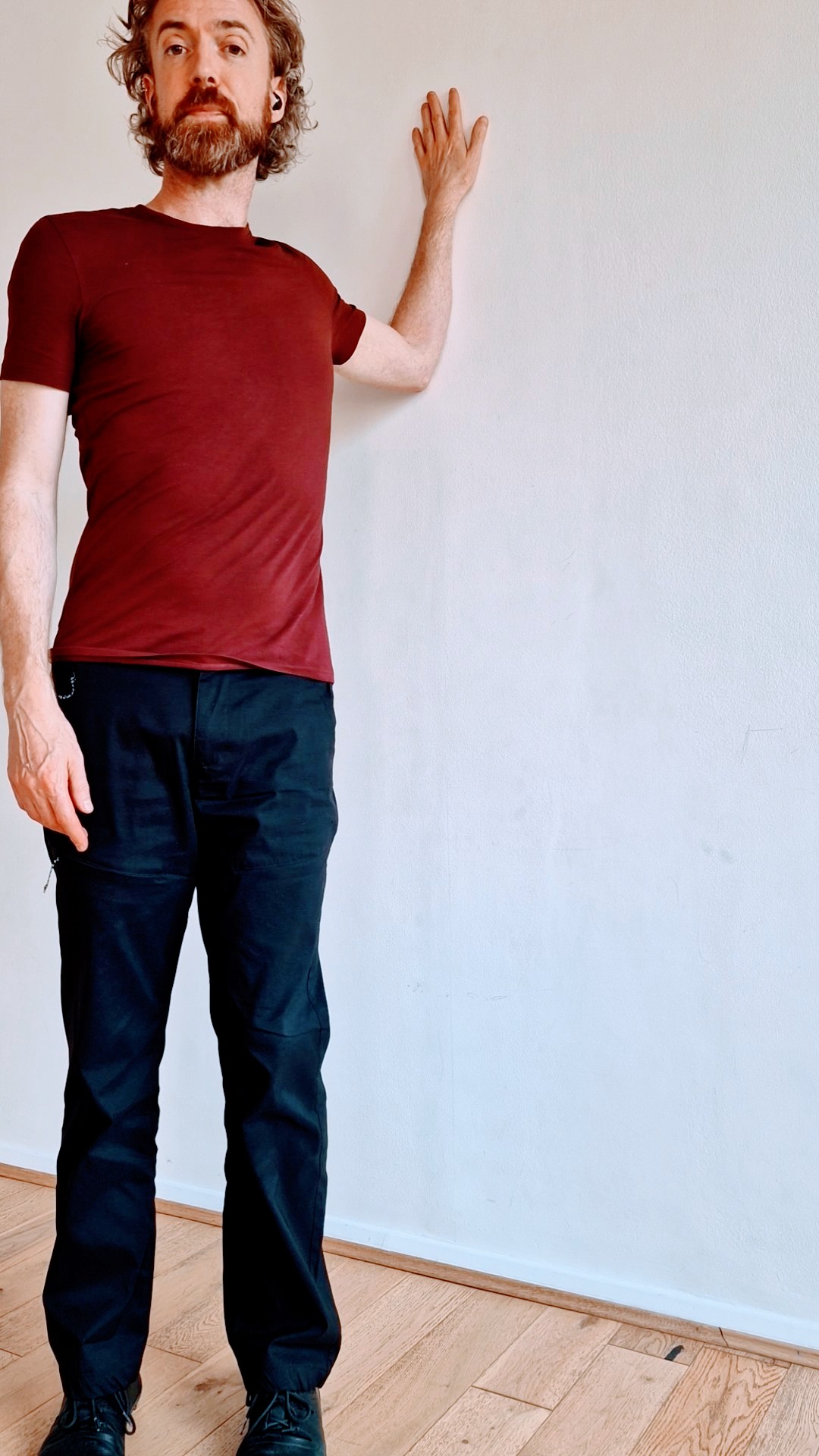
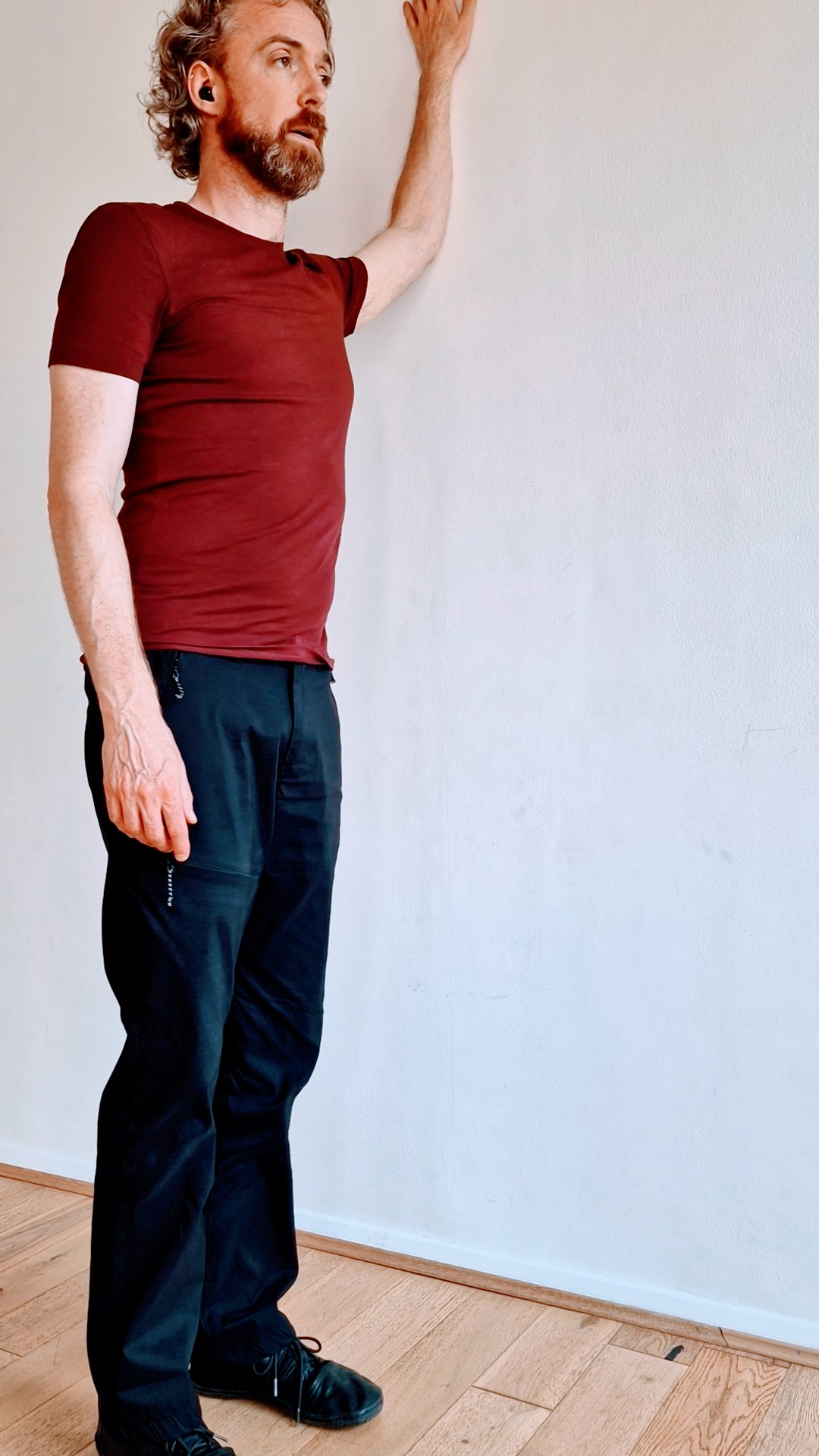

Some people do this with both arms either side of a door and then lean forwards. I think that you might be struggling to hold the weight of your body and control the feeling stretch, which might be different on each side. Doing them individually means you can focus on each side and work out what feels best for that side.
Video
Here’s a quick video of me running through this stretch.
Tim


